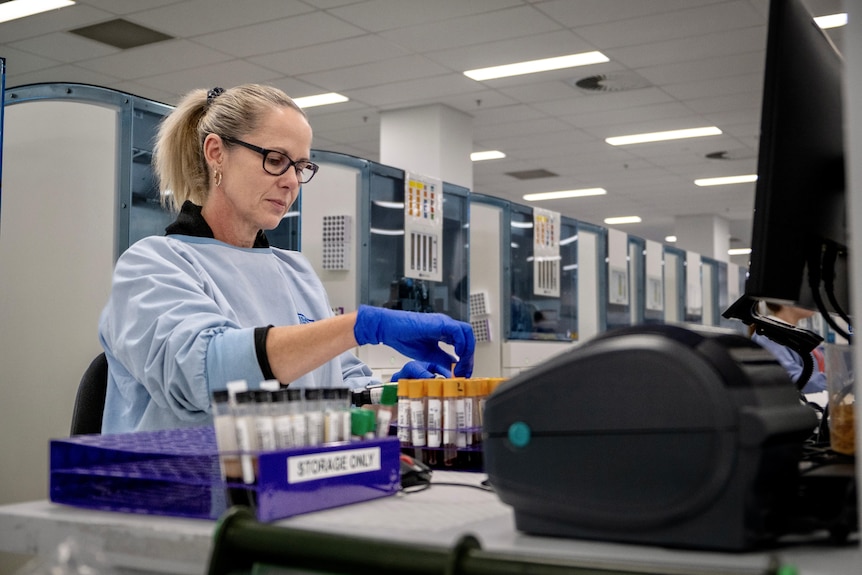Blood
Queensland claims ‘world first’ in medical artificial intelligence with new tech detecting diseases in blood
It might look like a normal microscope but in a “world first,” it’s being driven by artificial intelligence (AI).
The machine scans blood tests and photographs them in high resolution, says Professor Brian Lovell from the University of Queensland.
“For 10 years, we’ve been working on a system that can image these huge pathology slides, so we can then apply AI to the diagnosis,” he said.
Tubes of blood travel around the lab on conveyor belts inside the Sullivan Nicolaides Pathology (SNP) in Brisbane’s Bowen Hills.
The centre processes 35,000 blood samples a day.
CEO of SNP, Dr Michael Harrison, said AI was now helping speed up the process of scanning and identifying diseases in the samples.
“We used to look at 100 cells to classify [them], now we can look at 1,000 cells, and you get a much better outcome,” he said.
The AI is able to identify microscopic diseases in the blood samples, automatically emailing the result to a pathologist for confirmation.
“An experienced, trained scientist can tell the AI ‘look, that’s that pattern’ and the AI will remember that,” Dr Harrison said.
“So the next time it sees a digital image for that pattern, it’ll say, ‘oh, that’s X, and so it’ll classify it.”
Bringing microscopy into the 21st century
This allows pathologists to read and confirm the diagnosis on computer screens, instead of peering into microscopes in the dark.
“The AI is used during the image capture,” Professor Lovell said.
“The system actually knows what it’s looking for — it knows what diagnostic cells look like.
“And while it’s scanning, it’s also making sure the images are perfect, so that when a human looks at it, they’ve got a perfectly captured slide.”
Professor Lovell said in the field of microscopy, not much had changed since germs were first identified in the 1800s.
“Sure, there’s been better microscopes, but it’s much the same,” he said.
“So what we’re doing is taking microscopy out of that 19th century paradigm into a 21st century paradigm.”
Dr Harrison said using AI to read microscopy wasn’t being done anywhere else on Earth.
“So this is a world first, and it was probably one of the harder things that you can actually pick to do,” he said.
Human experts still vital
But Dr Harrison said it was not about robots taking the jobs of humans in pathology.
“It’s still within human control,” he said.
“This is a computer program that’s been trained by an expert and will be continually reviewed by that expert as well.
“There’s still a lot of people involved, as you can see in our laboratory.
“So this isn’t about making a laboratory into a place without people — a human signs off on everything,” Professor Lovell added.
“But we make it so that it’s much easier for the human to sign off quickly, because they’re given the information they need.
“And as soon as they see it, they can make a diagnosis.”

